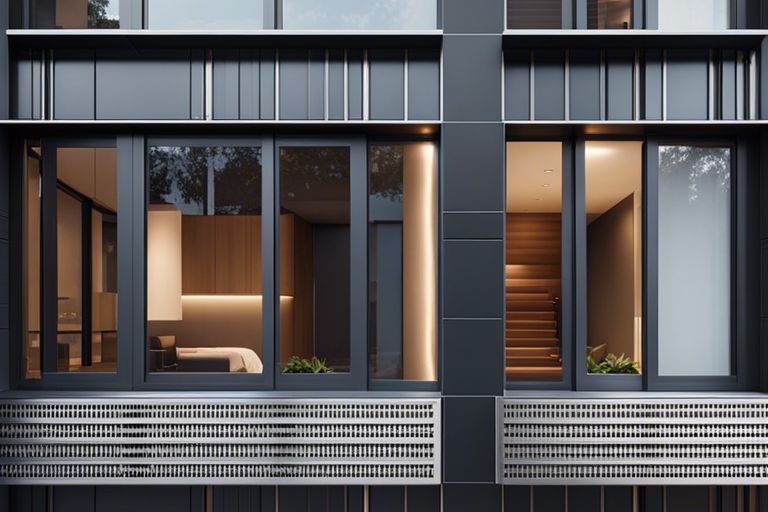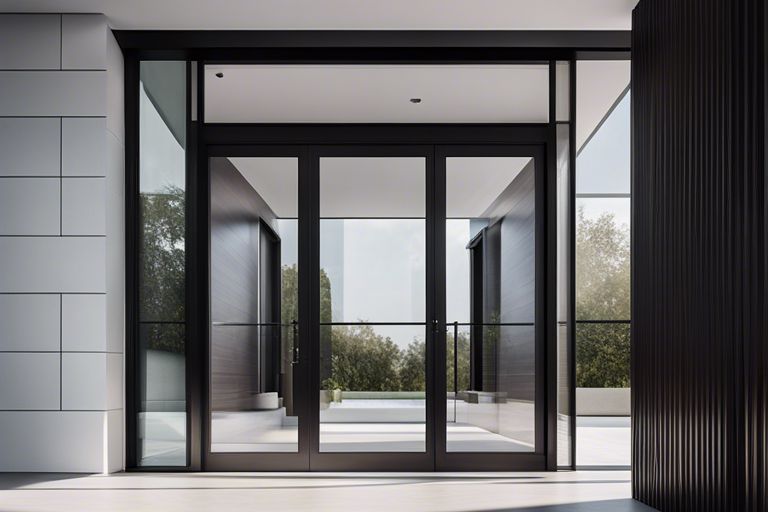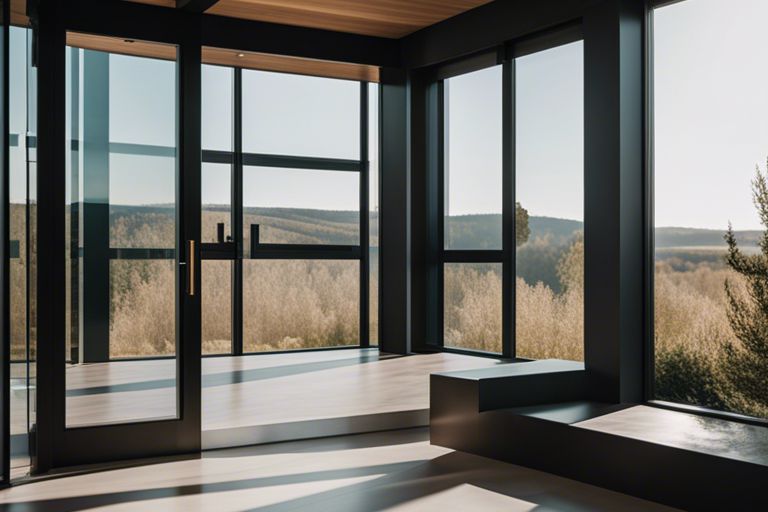When it comes to constructing modern buildings with curtain walls, connecting them securely to slabs is crucial for structural integrity and safety. In this detailed guidance, we will explore the importance of properly connecting curtain walls to slabs, highlighting key considerations, potential risks, and best practices to ensure a successful and safe construction process. By understanding the challenges involved and following recommended guidelines, construction professionals can enhance the durability and performance of curtain wall systems, ultimately creating buildings that are not only aesthetically pleasing but also structurally sound.
Key Takeaways:
- Ensure proper detailing: Connecting curtain walls to slabs requires careful attention to detail to ensure structural integrity and prevent water infiltration.
- Provide movement joints: Incorporating movement joints is essential to allow for natural expansion and contraction without causing damage to the curtain wall system.
- Consult with structural engineers: It is advisable to work closely with structural engineers to design and implement the connections between curtain walls and slabs effectively.
Fundamentals of Curtain Walls and Slabs
When it comes to connecting curtain walls to slabs, understanding the fundamentals of both elements is crucial. Curtain walls are non-structural elements that are designed to protect the building from external elements while allowing natural light to enter. On the other hand, slabs are horizontal structural elements that provide support for the floors and ceilings of a building.
Definition and Function of Curtain Walls
Curtain walls are lightweight, non-structural panels attached to the exterior of a building. Their primary function is to protect the building from wind, water, and other external forces, while also allowing natural light to illuminate the interior spaces. In addition to enhancing the aesthetic appeal of a building, curtain walls also provide thermal insulation and soundproofing.
Recognising the importance of curtain walls in modern architectural design is essential for architects and engineers involved in building construction projects. By understanding their role in enhancing the overall performance and appearance of a structure, professionals can make informed decisions when designing and implementing curtain wall systems.
Types of Slabs and Their Role in Building Construction
Slabs are horizontal flat plates used in construction to provide a working surface or to separate spaces within a building. There are different types of slabs used in building construction, including solid slabs, ribbed slabs, flat slabs, waffle slabs, and post-tensioned slabs. Each type of slab has its unique characteristics and advantages depending on the specific requirements of the building.
- Solid slabs: Traditional type of slabs with uniform thickness throughout.
- Ribbed slabs: Slabs with ribs on the underside for added strength and reduced weight.
- Flat slabs: Slabs with no beams and are suitable for large spans.
- Waffle slabs: Slabs with grid-like pattern on the underside for increased strength.
- Post-tensioned slabs: Slabs where high-strength cables are tensioned after concrete has set for added strength.
Recognising the different types of slabs and their specific roles in building construction is crucial for ensuring structural integrity and stability. Each type of slab offers unique benefits in terms of load-bearing capacity, span lengths, and architectural flexibility. By selecting the most appropriate slab type for a building project, engineers and architects can enhance the overall efficiency and performance of the structure.
| Types of Slabs | Role in Building Construction |
| Solid slabs | Traditional and reliable choice with uniform strength. |
| Ribbed slabs | Provide strength and reduce weight through ribbed design. |
| Flat slabs | Suitable for large span lengths without the need for beams. |
| Waffle slabs | Offer increased strength and architectural flexibility with grid pattern. |
| Post-tensioned slabs | Enhanced strength achieved by post-tensioning high-strength cables. |

Design Considerations and Pre-Installation Planning
When connecting curtain walls to slabs, thorough design considerations and meticulous pre-installation planning are essential to ensure a successful and structurally sound outcome. This chapter investigates into the critical factors that architects, engineers, and project managers must take into account when undertaking this connection to guarantee both safety and efficiency.
Analyzing Loads and Structural Requirements
Prior to connecting curtain walls to slabs, a comprehensive analysis of loads and structural requirements is imperative. Understanding the forces that will act upon the connection point is crucial for designing appropriate support mechanisms. Factors such as wind loads, dead loads, live loads, and seismic loads must be carefully evaluated to determine the most suitable anchoring methods and detailing for the specific project.
Moreover, considering the impact of differential movement between curtain walls and slabs is vital to prevent any potential structural issues. By accurately assessing the structural requirements and loads, designers can develop a strategy that ensures the integrity and longevity of the connection, promoting a durable and secure built environment.
Material Compatibility and Selection
Another critical aspect to address is material compatibility and selection when connecting curtain walls to slabs. The choice of materials for both the curtain wall system and the supporting slab must be carefully evaluated to ensure compatibility in terms of strength, thermal expansion, and weather resistance. Selecting compatible materials that can withstand the environmental demands of the location is essential for the long-term performance and durability of the connection.
Additionally, the installation process should consider the interaction between different materials to prevent corrosion or incompatibility issues over time. By prioritising material compatibility and selecting high-quality materials that align with the project requirements, designers can enhance the overall robustness and reliability of the connection between curtain walls and slabs.
Installation Techniques for Curtain Wall to Slab Connections
Step-by-Step Connection Procedures
When connecting curtain walls to slabs, it is crucial to follow a systematic approach to ensure a secure and lasting connection. Below are the step-by-step procedures for connecting curtain walls to slabs:
| Step | Description |
| 1 | Prepare the slab surface by cleaning and levelling it. |
| 2 | Position the curtain wall frame accurately on the slab. |
| 3 | Secure the frame to the slab using appropriate fasteners. |
| 4 | Apply a sealant to prevent water infiltration. |
Best Practices and Common Pitfalls
When it comes to connecting curtain walls to slabs, adhering to best practices is essential to ensure structural integrity and performance. One common pitfall is neglecting proper alignment during installation, which can lead to leaks and compromised aesthetics.
Best practices include thorough planning and coordination between the design and construction teams to guarantee seamless integration of the curtain wall with the slab. Regular inspections and maintenance are also key to identifying any issues early on and addressing them promptly.

Maintenance and Inspection
As part of ensuring the integrity and safety of your building, regular maintenance and inspection of the connection between curtain walls and slabs is crucial. By following a detailed guidance in this area, you can prevent potential hazards and ensure the long-term stability of your structure.
Routine Check-Ups for Long-Term Stability
Performing routine check-ups on the connection between curtain walls and slabs is essential for detecting any signs of deterioration or damage early on. Inspecting for cracks, dislocation, or water ingress can help in maintaining the structural integrity of the building. Additionally, checking for proper sealing and alignment will prevent potential issues from developing over time.
During these routine inspections, it is important to also assess the overall condition of the materials used in the connection. Look out for signs of corrosion, wear, or any other forms of degradation that could compromise the connection. Addressing any issues promptly will optimise the performance and longevity of the curtain walls and slabs.
Identifying and Addressing Connection Issues
Identifying and addressing connection issues between curtain walls and slabs requires a thorough examination by qualified professionals. Common issues such as inadequate support, improper installation, or structural movement can lead to serious structural problems if left unattended. In the worst-case scenario, connection failures can result in collapse or significant damage to the building.
Should any connection issues be identified during inspections, immediate action must be taken to rectify them. Engaging with structural engineers or contractors to assess and repair the connection is imperative to maintain the structural safety and stability of the building. Ignoring these issues can pose serious risks to the occupants and the integrity of the entire structure.

Connecting Curtain Walls to Slabs – Detailed Guidance
Connecting curtain walls to slabs is a critical aspect of building design that requires careful consideration and detailed guidance. By following the correct procedures and using appropriate connectors, the integrity and structural performance of the building can be maintained. It is essential to ensure that the connection is secure, weatherproof, and able to accommodate any movement between the curtain wall and the slab. This guidance offers valuable insights into the best practices for connecting these elements, ensuring the overall safety and stability of the structure. Architects, engineers, and construction professionals must adhere to these guidelines to achieve a successful and durable connection between curtain walls and slabs.
FAQ
Q: Why is it important to connect curtain walls to slabs properly?
A: Properly connecting curtain walls to slabs is crucial to ensure structural integrity and stability of the building. It helps in distributing loads effectively and prevents any potential issues related to movement or stability.
Q: What are the recommended methods for connecting curtain walls to slabs?
A: The recommended methods for connecting curtain walls to slabs include using anchor bolts, embed plates, or shelf angles. These methods provide secure connections and help in transferring loads between the curtain walls and slabs efficiently.
Q: What factors should be considered when connecting curtain walls to slabs?
A: When connecting curtain walls to slabs, factors such as building design, building materials, type of curtain wall system, and the structural load requirements should be taken into consideration. It is important to follow industry guidelines and codes to ensure a safe and reliable connection.






